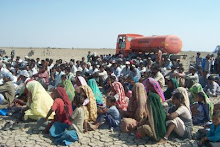The Times of India: Ahmedabad: Saturday, December 19, 2015.
The chances
of the Wild Ass escaping extinction have improved, largely due to conservation
efforts made by the state government.This is evident from the fact that the
animal, which is found only in the Little Rann of Kutch, has been moved from
the `endangered ' category to the `nearly threatened' category of animals in
the latest Red List of International Union For Conservation of Nature (IUCN)
prepared on the basis of its May 2015 report. The Wild Ass is locally known as
`ghudkhar'.
The `nearly
threatened' category is lower down in the IUCN's Red List of animals facing
threat of extinction. The `endangered' category includes animals which are more
at risk than those in the `nearly threatened' category . Just below the `nearly
threatened' group is the `least concern' category which has animals that are
unlikely to go extinct.
The IUCN
report says that the population of the Wild Ass has been re-established and it
is increasing. In Gujarat, there were 4,451wild asses as per the 2014 census.
In 2004, their number was 3,863; this increased to 4,000 in 2009.
Principal
Chief Conservator of Forests HC Pant said, “I have not seen the latest report
but the state has recorded a 10% rise in wild ass numbers, especially in the
past five years.“
The IUCN
report, however, makes remarks specific to Gujarat. It states that the wild ass
faces threats on several fronts.“Threats to Wild Ass in the Little Rann of
Kutch stem from increasing human activities. Land use patterns have changed
since the mega Narmada Dam project which resulted in Sardar Sarovar canals all
around the protected area. Uninformed release of Sardar Sarovar canal excess
waters into the Rann is having an impact on the micro-habitat, the short
grasslands and is restricting the movement of wild ass and other species across
the saline desert,“ the report states.
It further
states that increased agricultural practices have converted lands into
irrigation fields, resulting in shrinking habitat for the existing wild ass
population. Religious activities, cattle breeding and influx of people have
increased on the islands (or Bets) of the Rann.
Further, the
widespread growth of `prosopis juliflora' (an invasive weed) is an additional
threat to the wild ass habitat. An estimated 30-35% of the wild ass population
lives outside the protected area and human-wild ass conflicts are increasing.
















.jpg)
.jpg)
.jpg)
.jpg)













No comments:
Post a Comment